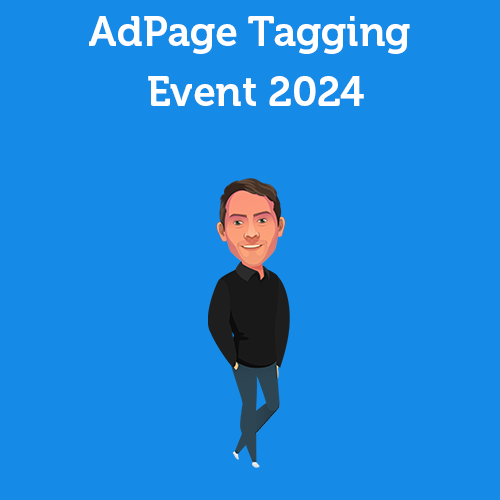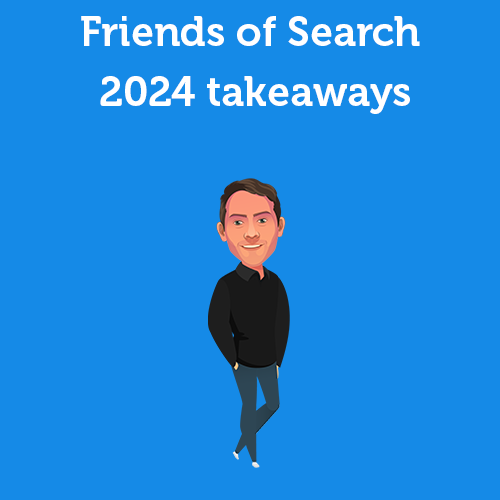Menu
Table of contents
But where do you start? And what steps should you take?
With these 12 tips, I answer both questions. Here's how to turn your existing content into the best content ever.
Tip 1: Make the article even more in tune with reader intent
Content you don't write for a search engine. You write it for the end user. For the reader.
Therefore, the template, setup, intent and how you structure your content should all be tailored to that end user.
So that's step one:
- Make sure the article is correct and logical
- Show content that matches the intent: get straight to the point and if people are looking for a comparison, make sure the comparison is done right away. And if people want to know how to bake a cake, explain that right away.
- Add relevant content that adds value and that the user really wants to read.
- Don't tell too much unnecessary information and remove irrelevant content
Tip 2: Update all figures, years and facts
End users (and Google) like content that is up-to-date. If you are going to update content, then you can also immediately make all the figures, years, sources, facts correct.
But possibly also information that, for example, was correct last year and now, through new research, turns out to be incorrect after all.
And finally: suppose you're writing a blog about something going on in the world at the time. A global pandemic or a war, for example. Make sure you update or delete that content (i.e., if it's no longer relevant).
![Updating old content [12 tips] 1 year update blog](images/jaartal-updaten-blog.jpg)
Tip 3: Update visual content (images and videos)
Another important part you need to update are images and videos. Did you write a review about a tool? Then make sure all the screenshots are correct and the interface is no longer old.
And did you write a landing page with a case of a website, for example? Then be sure to include a screenshot of the latest version of that website.
Anyway, you get the idea.
Tip 4: Again, analyze your competitors
If all goes well, before you started writing, you did some good research on competitors. Consider:
- Who are all scoring on the keyword?
- How long are their articles?
- What headings did they use?
- What keywords did they use?
- What kind of visual content did they use?
- How well or poorly is the article internally linked?
- How up to date is their article?
- Which information do they mention and which do they not?
You need to do this all over again. In particular, look at the top 3 competitors in Google. Is your article 200 words long and the competitors' are all 700+? Make your article longer.
Do they all use more long-tail keywords? Add these as well.
Do they all have an explanation video? You get the idea... Add this one too.
Tip 5: Check keywords again
Search behavior changes. So do search terms. But so can terms. Did you know that about 15-20% of searches entered in Google have never been entered before?
It is therefore very important to check that:
- you're still using the right keywords
- you are still using the right semantic keywords
- you're still using the right long-tail keywords
- new keywords have been added that you might be able to use
Tip 6: Search Console long tails
I've dropped it several times now this article: long-tail keywords. These are longer variants of your "main keyword.
Very simply explained, the word "bicycle" is a short-tail keyword and the term "red bicycle 28 inches" is a long-tail keyword.
There is debate in the SEO world whether the word "long" is about the number of words or how specific the assignment is. I'll leave that for now. In any case, you now understand what a long-tail is.
With Search Console you can find out all the keywords for which you are findable. And so also the keywords for which you are somewhat findable, but not very well.
For example, terms where you are in spot 8 or spot 12.
You can figure this out by going to "Search Results" in Search Console, then clicking on a page under "Pages," then clicking on "Searches" again, then turning on average position.
Then you can figure out all the keywords that your article is findable on, but that you are not yet ranking well for, and optimize your text for them.
![Updating old content [12 tips] 2 long tails find search console](images/long-tails-vinden-search-console.jpg)
Tip #7: Check people also ask
When you type a search query into Google, you often get to see a people ask also block. It looks like this:
![Updating old content [12 tips] 3 people also ask update](images/mensen-vragen-ook-updaten.jpg)
You can incorporate the questions you see here into your article. You can include them in the headings, in the text or in the multifaq (I'll tell you more about that in tip 9).
This is because Google considers these to be relevant topics for your keyword and you thus increase the chances of being listed among them. This, of course, provides additional visibility and findability.
Tip 8: Optimize all On Page SEO elements
Of course, I am assuming that your article is already perfectly fine in terms of SEO.
But with all these helpful tips, of course you may have changed your keyword or added a bunch of new content.
So it is very important to take another look at all the On Page SEO elements. Which ones they all are and what to look out for, I'll explain to you here.
Tip 9: Do more with structured data (e.g., the multifaq)
Structured data is nothing more than a piece of code around a piece of content that provides Google with insight into what kind of content it is.
You can find out what options there are by visiting Schema.org. Have you written a blog? Then you can use the structured data 'article'.
If you created a recipe, you can use the structured data 'recipe'.
One that we use a lot is the multifaq structured data. This allows you to highlight frequently asked questions on the page, so you grab extra space in the search results.
It looks like this:
![Updating old content [12 tips] 4 multifaq structured data](images/multifaq-structured-data.jpg)
Tip 10: Add new internal and external links (if needed)
When you post text, you can add links in the article that are relevant. These should be links that further help visitors along the way.
The page you link to benefits from that link. But the page the link is on can benefit somewhat from that itself.
After all, relevance is everything. And if you link to a valuable website, Google may see that as a positive sign.
By the way, this applies to both internal links and external links, although internal links are many times more important.
Tip 11: Add new internal links to the article
Something that is almost never done (but can work incredibly powerfully) is to add additional links from existing pages to the new or updated page.
The more internal links, the better Google can find your page. And the better your page is found, the faster and better it can be indexed.
Tip 12: Spell check
Flawless spelling is, of course, a hygiene factor: it is not a choice, but it must be the foundation. From beginning to end, your article must be in order and contain no spelling or grammatical errors.











Written by: Daniel Kuipers
Daniel is the founder of Online Marketing Agency. He constantly scours the Internet for the latest gadgets and tactics and blogs about them in understandable language. Well, sometimes.